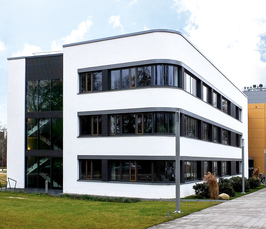Spectroscopic Signatures of Edge States in the Quantum Spin Hall System Bismuthene
- PC Online Talk
- Date: Oct 8, 2020
- Time: 11:00 AM (Local Time Germany)
- Speaker: Julian Maklar
- FHI Department PC

Additionally, scanning tunneling spectroscopy measurements have revealed conductive edge channels located at substrate steps and domain boundaries consistent with theory predictions. Here, we investigate the electronic structure of Bismuthene upon ultrafast photoexcitation via time- and angle-resolved photoemission spectroscopy (trARPES). We map out the unoccupied electronic band structure and observe faint spectral weight inside the band gap, which we attribute to metallic edge channels. In addition, we track the full relaxation pathway of excited carriers and observe a complete recovery to the ground state within few hundred femtoseconds – several orders of magnitude faster than in conventional indirect semiconductors - which further hints towards the presence of conductive edge states.